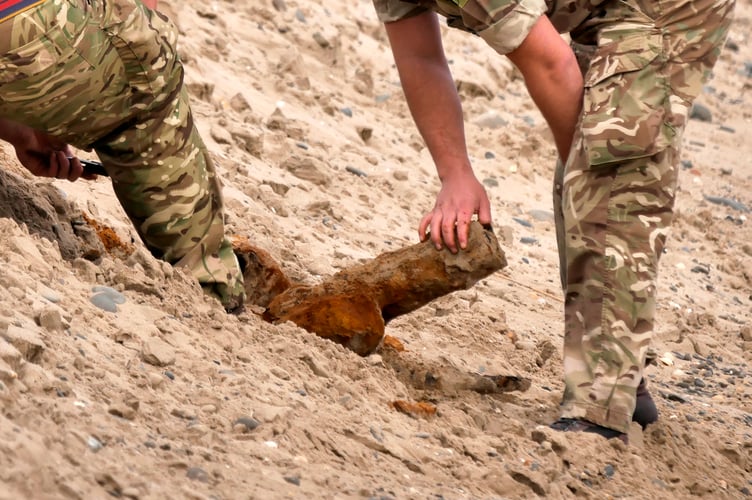A BOMB disposal team has safely detonated ordnance found on Ynyslas beach.
The explosive device was found on Monday 9 October on the popular beach, which once served as a test range for rocket propelled explosives during and shortly after World War II.
Members of the Army and HM Coastguard were on site ensuring the controlled explosion was carried out safely.
A spokesperson for HM Coastguard said: “HM Coastguard responded to a report of suspected ordnance at Ynyslas, Ceredigion on Monday 9 October at approximately 1.15pm.
“Borth and Aberystwyth Coastguard Rescue Teams were sent to investigate and set up a safety cordon, before informing the Explosive Ordnance Disposal (EOD) team. The coastguard teams manned the cordon while EOD detonated the ordnance. Dyfed-Powys Police were also informed.”

Due to an increase in the number of explosive devices found on the beach in recent years, Natural Resources Wales - the landowners of Ynyslas beach - requested the Ministry of Defence conduct a sweep of the area, and claim that despite Monday’s discovery, reports of explosive devices at the beach have fallen since then.
Justin Lyons, Senior Land Management Officer for Natural Resources Wales said: “We are aware that the Army was in attendance at the Dyfi National Nature Reserve at Ynyslas on Monday, 9 October, accompanied by HM Coastguard, to undertake a controlled explosion of ordnance that was reported by a member of the public.
“Ynyslas was used as a test range for rocket propellants during and just after the second world war and several items of ordnance from this period are still uncovered annually.
“There are several warning signs in place around the site with pictures of the ordnance types that have been found, and advising people what to do if they come across one.
“If you live locally or are visiting the area and find anything suspicious, please make sure you do not touch the item, and call 999 immediately to request the HM Coastguard with a detailed description of the location and a grid reference, so it can be disposed of safely.”

.png?width=209&height=140&crop=209:145,smart&quality=75)


